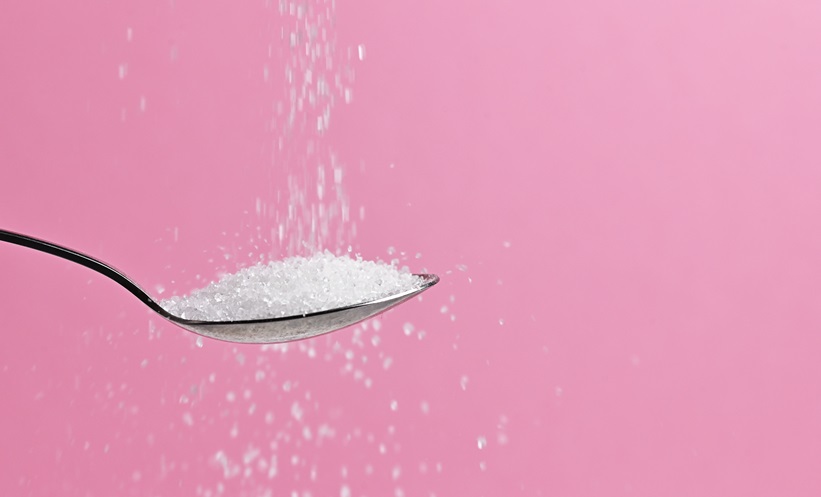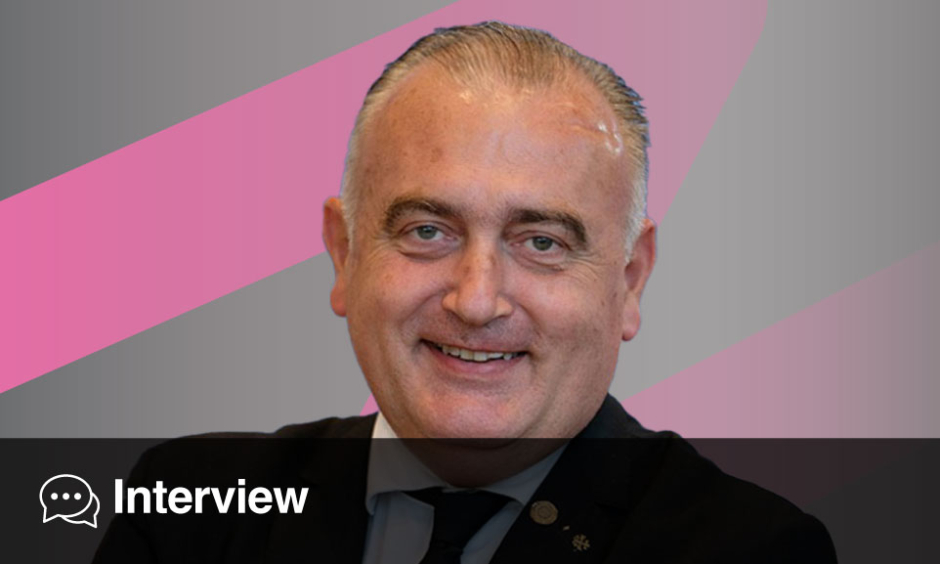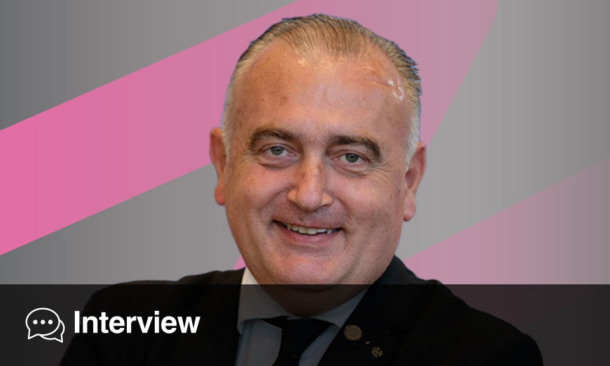Abstract
Neuromyelitis optica is characterised by severe visual impairment and neurologic dysfunction, and aggressive plasmapheresis treatment is often recommended. Medication and therapeutic interventions for acute and chronic treatment have been the subject of retrospective studies and case reports; however, the clinical improvement that follows plasmapheresis cannot be explained merely by the removal of the pathogenic antibodies. The guidelines regarding plasma volume in plasmapheresis are often not adhered to; however, treatment of lesser volume reduces complications and the cost incurred, without affecting clinical outcome. The goal of this review is to understand the biologic and clinical data supporting plasmapheresis, examine the possible role of low-volume plasma treatment, and highlight advanced apheresis techniques that may be applied as therapeutic modalities.
INTRODUCTION
Neuromyelitis optica (NMO) is an autoimmune, inflammatory, demyelinating disorder characterised by attacks within the spinal cord and optic nerve.1 The disease is more prevalent among middle-aged women in Asian populations.2,3 The natural history of NMO leads to a stepwise impairment without a progressive phase; however, the mortality rate has dropped dramatically since the use of immunosuppressive drugs.4
The purpose of this review is to understand the evidence for the effectiveness of plasmapheresis as an add-on therapy for NMO spectrum disorders (NMOSD). The technical aspects of the procedure will also be discussed from a transfusion medicine specialist’s perspective and the authors will comment on the role of low-volume plasmapheresis based on their >10-year experience at a tertiary neuroscience centre in southern India.
CLINICAL SPECTRUM
The current diagnostic criteria for NMO include optic neuritis, acute myelitis, and at least two of the following three supportive criteria: contiguous spinal cord MRI lesions extending over ≥3 vertebral segments, brain MRI not meeting diagnostic criteria for multiple sclerosis, and NMO-seropositive status.5 Myelitis presents with paraparesis and sensory loss below the lesion, sphincter loss, dysaesthesia, and radicular pain. Optic neuritis is characterised by poor prognosis, appears in middle and older-aged women, and presents with ocular pain, visual field deficits, and positive visual phenomena.5-7 The hypothalamus and brainstem are involved in 15% of cases. Symptoms of central nervous system (CNS) involvement include hiccups, intractable nausea, and respiratory failure. NMO can have either a monophasic or relapsing course.8 The monophasic course is associated with younger age at disease onset, equal male and female predominance, and has a 90% 5-year survival rate; however, approximately 80% of patients with NMO have relapsing course,3,9 which has a poor prognosis.
PATHOGENESIS
Circulating autoantibodies against aquaporin-4 (AQP4; NMO-IgG) and complement are the two main drivers of NMO pathogeny.10 AQP4 is abundantly expressed in the CNS and is found in the spinal central grey matter, optic nerve, and hypothalamus, which can be involved in NMO.11,12 NMO-IgG is detected in 60–80% of patients with clinically and radiologically diagnosed NMO,13,14 and is associated with more severe and extensive disease. NMO-IgG antibodies are also involved in complement-dependent toxicity against astrocytes and regulate the expression of AQP4.11 Altered expression of AQP4 leads to brain and spinal cord oedema by changing the water flow.13,15
CURRENT TREATMENT MODALITIES
The first-line treatment for NMO is high-dose intravenous methylprednisolone administered rapidly and continued for 3–5 days.16 Steroids reduce the inflammatory cellular response by triggering apoptosis of lymphocytes; however, this is not always sufficient and NMO relapses are commonly resistant to steroids.17 Intravenous Ig therapy can be used in acute exacerbations,16,18 and for refractory demyelinating events and resistant cases of persistent inflammation without improvement after both steroids and plasmapheresis, escalation to cytoablative therapy is effective.19
Plasmapheresis is an established adjunct therapy used in severe NMO attacks according to the American Society for Apheresis (ASFA) Category 2,8,13,17 and as a maintenance therapy (ASFA Category 3) for the prevention of NMO relapse.8,20 As a therapeutic option, plasmapheresis is of critical importance in patients with either seropositive or seronegative NMO with acute neurological deficit affecting spinal cord function; these patients do not clinically improve with steroids alone and often have severe relapses.
PLASMAPHERESIS
Rationale for Plasmapheresis
The clinical benefit of plasmapheresis is primarily observed in monophasic acute NMO cases, and a long-term effect in relapsing NMO is less frequently achieved. By means of plasma treatment, NMO-IgG antibodies and complement are excluded from the circulating pool.17 NMO-IgG serostatus does not affect the response rate of plasmapheresis and is not required to start treatment in a severe relapse patient.20,21
Studies and case series have reported significant improvement in around 44–75% of NMO patients treated with plasmapheresis,13,17,20,22 and a 45% response rate in severe and sudden attacks.5 Weinshenker et al.23 considered a transition from corticosteroids to plasmapheresis in patients with myelitis. The investigators randomised NMO patients who were unresponsive to steroid therapy to active or sham plasma treatment in a double-blind study.23 The patients experienced marked therapeutic benefit with plasmapheresis, whereas no effect was observed with sham exchange.
The pattern of demyelination is a key determinant of plasmapheresis efficiency. Keegan et al.22 reviewed clinical data from 10 patients who received plasmapheresis and the treatment outcome was measured during the first month and monitored until late clinical outcome at 1 year. In this study, a moderate or marked improvement was reported in 60–80% of NMO patients following plasmapheresis.14,22 Watanabe et al.13 reported treatment in six female NMO-IgG-positive patients with 3–5 sessions of plasmapheresis. The investigators recorded significant functional improvement in two NMO-IgG-positive patients with severe myelitis and one with optic neuritis following plasmapheresis. The clinical improvement started to appear after one or two sessions and removal of the humoral factors resulted in an alleviation of the inflammatory responses and led to functional recovery.13 In a previous study by the authors, 19 of 24 patients had clinical improvement 6 months after plasmapheresis.14
Favourable outcomes after plasmapheresis have also been reported in patients with severe brain attacks or posterior reversible encephalopathy syndrome.24,25 Plasmapheresis minimises the residual impairment that follows NMO. However, judging clinical improvement is complex due to the subjective classification of mild, moderate, or marked disease instead of a quantified clinical exam;22,26,27 therefore, the difference in expanded disability status score is taken as the main clinical outcome in various studies.17 In two studies,17,20 Bonnan et al. observed lower residual and mean difference in expanded disability status score in the plasmapheresis-treated group compared to the steroid-only group.
A synergistic effect of combined steroid and plasmapheresis treatment is expected due to their complementary action. Merle et al.28 showed that plasmapheresis combined with pulsed intravenous steroids in 16 acute optic neuritis patients was more effective than pulsed intravenous steroids alone in 19 patients.28 Wang et al.29 reported that most patients responded to high doses of steroids in the subsequent relapses post plasmapheresis. Plasmapheresis is also useful as a rescue therapy when steroid therapy is not effective in repeat myelitic attacks.22,29
Timing of Plasmapheresis
Plasmapheresis efficiency depends on the timing of initiation, ranging from immediate, dramatic improvement, otherwise known as the Lazarus effect, to no effect.30 In previous studies, the procedure has been started immediately (median: 19 days)31 or was delayed (median: 41 days),13,16,32 which affected residual visual acuity. In recovered patients, averaged residual visual acuity tended to be lower in patients who had delayed plasmapheresis.17,20 Jacob et al.33 initiated plasmapheresis 2 weeks after high-dose steroids if no recovery was seen and if deficits were severe, while Llufriu et al.26 observed improvement in 83% of patients when plasmapheresis was given before Day 15, but improvement fell to 43% of patients after 2 months. Magaña et al.21 found similar functional improvement in 4 days (after the third session).21 In addition, Bonnan et al.17 recommended early initiation (within 2 days) of plasmapheresis after clinical suspicion of acute NMO, while the authors of this review recommend plasmapheresis initiation within 1 week of an acute attack.14,17 Patients who have preserved reflexes and receive early plasma treatment, within 20 days of an attack, have been shown to have a high likelihood of responding to plasmapheresis.8 However, there is no evidence to support the immediate and simultaneous administration of corticosteroid therapy and plasmapheresis for NMO or other acute demyelinating relapses.16
Bonnan et al.17,20 postulated a link between the staging of NMO lesion and the plasmapheresis effect on clinical and radiological outcome; a fairly good outcome was observed if plasmapheresis is performed at either Stage 1 or 2. In another study, nonresponders were enrolled late for active treatment, around Stage 3, and, due to severe, irreversible axonal injury, plasmapheresis was not found to be useful.14,17
Prophylactic and Maintenance Plasmapheresis
Retrospective case reviews have shown that plasmapheresis is beneficial as a chronic treatment for the prevention of NMOSD relapse;8 for example, those who received plasma treatment had lower residual disability scores. Together with immunosuppressive drugs, weekly plasmapheresis has been used to achieve a sustained depletion of NMO-IgG and complement, and a case series analysed the efficacy of concurrent plasmapheresis treatment in NMO relapse prevention.34 Young age, male sex, preserved reflexes, and early initiation of treatment were associated with moderate or marked improvement.14,16 In addition, following plasmapheresis, a sustained improvement was observed.22 Patients with steroid-refractory optic neuritis may also benefit from weekly plasmapheresis.9,34
Plasmapheresis Procedure
Plasmapheresis is based on the extracorporeal blood separation technique designed to remove either plasma or its constituents from the blood’s cellular elements.35 The removal of circulating anti-AQP4 antibodies is the principal mechanism of action in NMO treatment;10 though, the presence (or absence) of the antibody has no effect on the volume of the plasma treated.14
There are three different plasmapheresis methods used to treat this autoimmune disease: plasma exchange; double filtration plasmapheresis (DFPP), also known as cascade plasmapheresis; and immune adsorption (IA).36 The process of DFPP selectively removes the antibodies and hence the substitution fluid required (albumin, fresh-frozen plasma [FFP]) is less.37 After removal of the antibody in the intravascular space, there is rapid plasma redistribution from the extravascular space into the intravascular space, which requires repeated sessions.38 This necessitates the combination of short-term active plasma volume treatment with long-term immunosuppression.
The therapeutic benefit of plasmapheresis cannot be attributed to the maximal removal of the antibody per session. Often, guidelines regarding volume of plasma treated per patient are not strictly adhered to, although definite clinical improvement is seen in the majority of cases. The minimum recommended plasma volume to be treated per session is equivalent to the patient’s total plasma volume.8 Both Weinshenker et al.23 and Keegan et al.22 recommended seven sessions of plasmapheresis, administered on alternative days for 14 days. In their study, Watanabe et al.13 treated 2–3 L of plasma in each session; however, as per the revised 2016 ASFA guidelines, the recommended standard volume treatment in NMO is 1–1.5-times the plasma volume per session,8,18 or 39–55 mL of plasma per kg of body weight.39 Daily or alternate day treatment, with a duration of 10–14 days and consisting of 5–7 sessions, is recommended for cases of acute exacerbation of NMO.8,18
The authors of this review propose the definition of low-volume treatment as the removal of 0.6–0.8-times the plasma volume per session, or 23 mL of plasma per kg of body weight, spread over 5–7 sessions.14 In the authors’ opinion, less-than-recommended treatment of plasma is as near efficacious, if not equally so, in treating acute attacks of NMO. For example, the authors processed and treated 59% less plasma volume (22 mL/kg [0.6 plasma volume])40 than reported by Keegan et al.22 (55 mL/kg [1.1 plasma volume]) per session of plasmapheresis.
Complete removal of pathogenic antibodies is impossible to achieve. With the use of replacement solutions, an exchange of one plasma volume leads to the immediate clearance of the antibodies by 50–60%. Similarly, an increase in the volume exchanged by 1.4-times lowered plasma levels by 75%;1 procedures with volumes beyond this level have shown little benefit.17 For every extracorporeal method, coagulation variables should be closely monitored during treatment.
Plasmapheresis Technique
Plasmapheresis is carried out in either a designated suite or intensive care unit and is achieved with centrifugation devices or with permeable blood filters. The authors separate plasma by intermittent flow centrifugation, although continuous flow centrifugation has been found to be more efficacious and requires less time.14 A plasmapheresis session is usually performed over a 2–6 hour period, depending on the patient’s height, weight, haematocrit level, and other technical parameters, such as the method of separation (filtration or centrifugation, intermittent or continuous flow, single or dual venous access), volume of plasma treated, and blood flow rate.17
One or two peripheral or central venous accesses are mandatory. Two 16-gauge needles are placed in both arms for peripheral access in continuous flow separation.17 In intermittent flow separation, a single 16-gauge needle is placed. In the authors’ experience, a single needle is preferred because it achieves better venous flow14 and reduces the complications that follow double-needle venous access, and even a central venous access.41 For patients without satisfactory peripheral access, inadequate flow rate, or high-flow plasmapheresis, a double-lumen catheter is placed in one of the major veins, either the internal jugular or femoral.17
Anticoagulants, specifically citrate (the authors’ preferred option), heparin, or a combination of the two, are either added to the preplasma filter (in the filtration method) or infused via the outlet line (in the centrifugation method) to prevent the blood from clotting.17 Albumin and plasma expander solutions, such as normal saline or hydroxyethyl starch, can be used as replacement solutions for plasma discarded during plasmapheresis.42 FFP can be transfused if post-procedure coagulopathy is suspected; the authors suggest prophylactic transfusion of two units of FFP at the end of plasmapheresis session.14
Duration and Discontinuation of Procedures
The exact role of continued plasmapheresis during NMO attacks to ensure low impairment of the patient has not yet been addressed.17 Most studies performed an average of five procedures for acute exacerbation, but the number of procedures ranged from 2–20.8 In one case series, 5 out of 7 patients who received maintenance plasmapheresis (three sessions per week for 2 weeks, two per week for 2 weeks, and then once weekly for 3–5 weeks) showed varying degrees of improvement and reduction in the number of NMOSD exacerbation.8
Bonnan et al.17,20 reported minor side effects in 24% of plasmapheresis-treated patients. The common reactions include hypotension, vasovagal reactions, and perioral paresthesias due to hypocalcaemia. Urticaria or allergic reactions, following plasma transfusion, and leucocytosis are uncommon, as well as complications of vascular catheters (thrombotic occlusion, pneumothorax, haemothorax, nerve injury, haemorrhage, and infection).Venous thrombosis, coagulopathy, electrolyte disturbances, and cardiac arrhythmias are very uncommon.39 Plasmaphereses are contraindicated in cases of ongoing infectious disease, precarious haemodynamics, and active haemorrhage (heparin). Immediate side effects are related to the extracorporeal line: haemodynamic instability (hypotension or hypertension), vasovagal syndrome, perioral paresthesias, numbness or tingling due to hypocalcaemia, venous puncture hazards with excessive local bleeding, or septicaemia.17
Anaemia is also common but self-limiting, and thrombocytopenia is an inevitable sequela, with a >30% drop in post-procedure platelet counts. Haemostasis is affected in variable ways: first, an immediate hypocoagulation state, which rarely leads to bleeding, followed by a hypercoagulable state, which may result in venous thrombosis. Preventive anticoagulation with heparin may be required in chronic nonambulatory patients and persistently low fibrinogen levels have been described with the concomitant use of high-dose steroid infusion.17,22
FUTURE TREATMENT STRATEGIES
Since lesion severity depends on initial and definitive depth of the loss of AQP4 and astrocytes, future treatment strategies may be directed to AQP4 preservation43 that may also include targeted removal of the pathogenic antibodies. DFPP and IA may be used as novel therapeutic modalities for NMOSD and other neurological illnesses when conventional plasmapheresis is otherwise indicated. Yoshida et al.44 reported a patient who developed anaphylactic shock symptoms after FFP infusion, and DFPP led to clinical improvement without any complications. While there is no published experience of cascade plasmapheresis in the treatment of NMO, the authors believe that a reduced number of sessions would be required to achieve therapeutic benefits with cascade plasmapheresis compared to conventional plasma exchange. IA, previously described in myasthenia gravis31 and various other neurological disorders,45 is the most specific plasmapheresis technique. IA is especially suitable to NMO since the pathological core is anti-AQP4 IgG antibodies, which are selectively removed.17 There has been some experience of IA in the NMO setting.46 The advantage of these newer techniques is removal or adsorption of the specific antibody without fluid replacement.45
CONCLUSION
Immunologic and clinical studies have established a definite role for plasmapheresis in the management of NMOSD. Plasmapheresis is now recommended for unusual and severe attacks of multiple sclerosis and NMO that do not improve with high-dose corticosteroid treatment in the expected timeframe.47 Plasmapheresis-treated patients achieve a better outcome after a spinal attack, especially if treatment is given during the first attack. Together with steroids, plasmapheresis is also a major treatment for relapse, aimed at preventing cumulative disability, and is a safe, well tolerated, and efficient add-on therapy in NMO. Plasmapheresis also improves the short prognosis of NMO relapses, if given early, and is proven to be effective regardless of NMO-IgG status.17 A European Federation of Neurological Societies (EFNS) Task Force paper underlined the importance of the positive effect of this treatment.48
No controlled trials of therapeutic plasmapheresis in NMO have been published. However, the authors are aware that effective trials against placebo may be difficult to perform because NMO can be an extremely debilitating disease. Studies of treatment for NMO are also made difficult by natural fluctuations in disease activity. Based on experience, plasmapheresis leads to functionally significant neurological recovery in a proportion of severely disabled patients with acute attacks of NMO in which patients do not respond to high-dose steroid therapy.
Few authors have shared these experiences, and attempts to evaluate the feasibility and safety of small (low)-volume plasmapheresis as a potential alternative low-cost treatment for patients with Guillain-Barré syndrome, especially in India, have been limited.49,50 The authors suggest the consideration of low-volume plasmapheresis as part of the treatment of severe NMO attacks and that, considering the procedural complications seen, especially when standard volume treatment is followed, low-volume treatment could be given repeatedly, albeit less frequently, in severe relapses of NMO, extended transverse myelitis, or bilateral severe optic neuritis resistant to steroids. The authors also propose large multicentric randomised therapeutic trials to validate low plasma volume treatment compared to standard plasma volume treatment, and to determine the effectiveness based on clinical improvement and radiological assessments rather than only on absolute decrease in the antibody levels.








